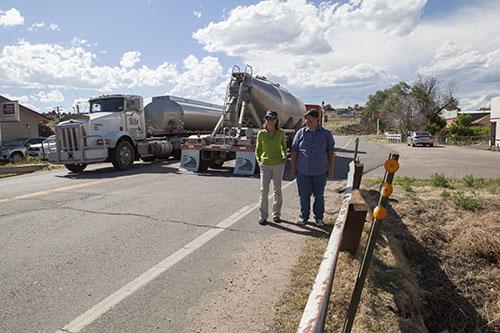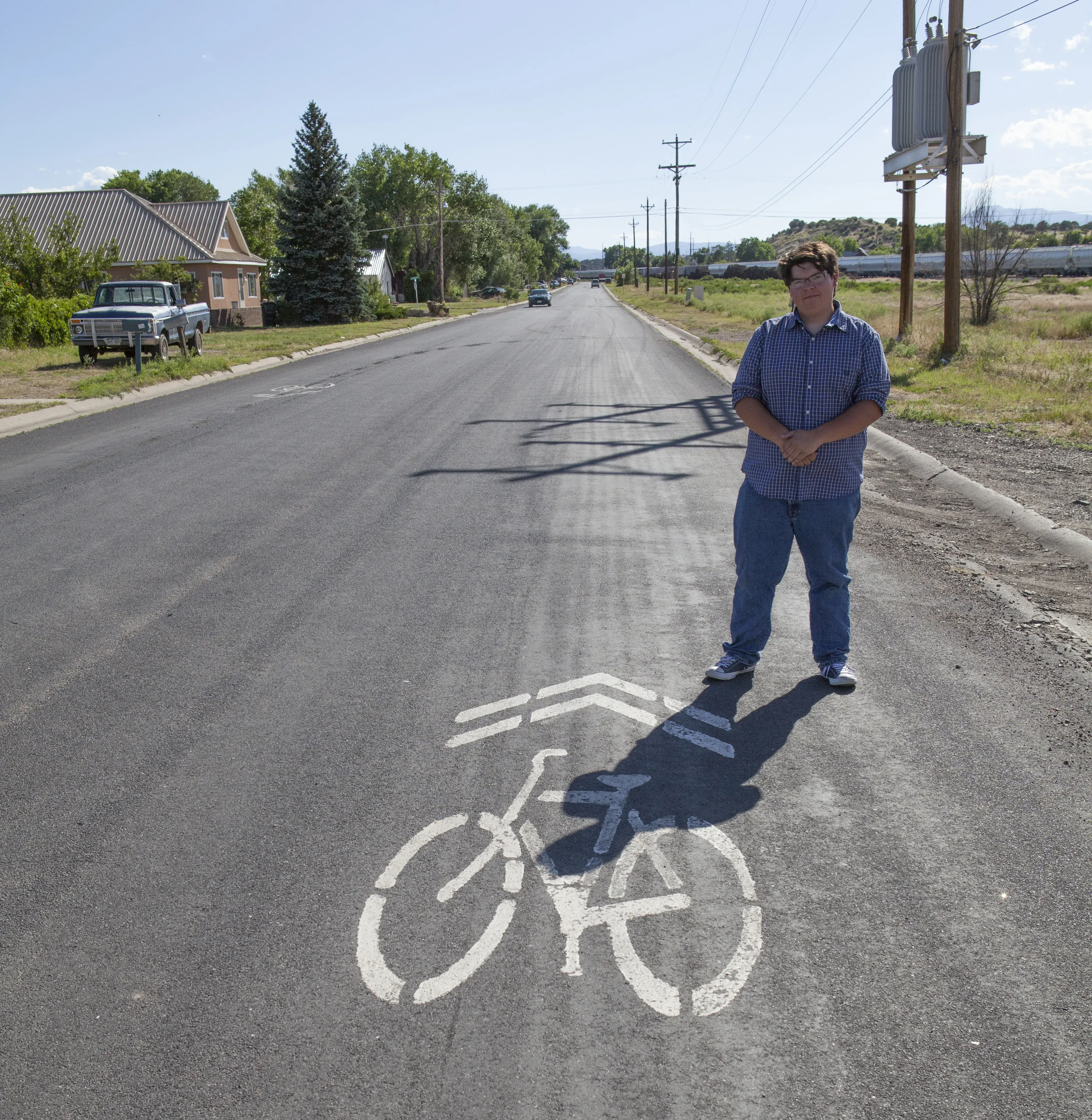The people of Walsenburg are outnumbered in their own neighborhoods.
The southern Colorado town sits at the junction of Interstate 25 and U.S. Highway 160 — the main route to the San Luis Valley, Durango and Farmington, New Mexico.
Every day, Walsenburg’s resident population of 2,900 is dwarfed by the estimated 8,000 vehicles that grind through town, including some 400 heavy trucks, according to the Colorado Department of Transportation (CDOT).
So while summer means bike rides and outdoor adventures for most small-town kids, it’s different for those in Walsenburg.
“In the summertime, it’s back to back semis,” said Cindy Campbell, director of the Huerfano County Chapter of LiveWell Colorado, a nonprofit dedicated to fighting obesity.
The traffic is more than just a disturbance. Huerfano County, where Walsenburg is located, placed last in Colorado for health outcomes in the most recent County Health Rankings by the Robert Wood Johnson Foundation.

A group of Walsenburg residents decided to take a stand for the health of their community. Their vision will start to become reality when CDOT spends $1.3 million to create safe pedestrian routes at three critical points in the town. Project design will start this summer, with construction scheduled for 2017.
Getting to this moment, though, has demonstrated the challenges with creating alternatives to the automobile.
Campbell started working for LiveWell in 2011 and created a community group to focus on the built environment. “The conversations just kept going back to biking and walking,” Campbell said. “The topography is ideally suited for bike riding — some hills, but nothing too extreme . . . But no bike routes.”
A bike and pedestrian advocacy team asked local kids to sketch out their favorite bike routes on a map. The team used that input to designate bike routes and, with the city council’s blessing, began painting bicycle icons on the roads to alert drivers.
The painting project proved burdensome for Campbell’s volunteer team, but about that time, a bigger opportunity came along.
The Colorado Public Interest Research Group (CoPIRG) got involved and set up a meeting with Bill Thiebault, the transportation commissioner for southern Colorado. The Transportation Commission oversees CDOT and decides which projects should be a priority.
A high school student, Emilio Archuleta, gave Thiebault a PowerPoint presentation on Walsenburg’s treacherous pedestrian environment. Thiebault was impressed and returned soon with CDOT staff for an encore presentation.
Archuleta hardly had a chance to start before a CDOT official interrupted and said the agency planned to commit $1 million to the project, Campbell said.
CDOT hired an engineering firm to work with local advocates and draw up a menu of options for making Walsenburg friendlier to walkers and bicyclists. One option was to remove some street parking downtown and build bike lanes.
That idea sparked an outcry that lasted for months.
“Folks want to be able to park right in front of whatever store they’re going to,” Campbell said.
So they shelved plans for bike lanes. The current project will not touch Walsenburg’s congested downtown.
But it will create sidewalks and safer crosswalks in three areas that attract lots of kids — the elementary school and library, both north of downtown, and the town’s water park west of downtown. CDOT will also add a pedestrian/ bike lane on a bridge near the school that is currently dangerous to cross, especially when snow piles up on the edges.
The project is designed to work for all ages at the intersection of safety, physical activity and economic opportunity. When people feel safer on foot, they’re more likely to get out of the car. And when they get out of the car, they’re more likely to visit a local business.
CDOT staffers listened closely to community voices, which was a welcome change from typical transportation projects, Campbell said. “They get it when it comes to community engagement, especially with bike and pedestrian advocacy,” she said.
It’s a lesson in how healthy change is possible — one step at a time.

